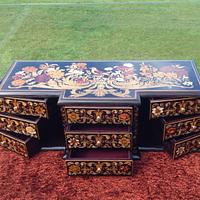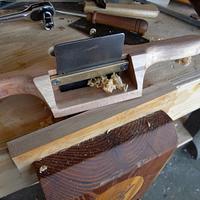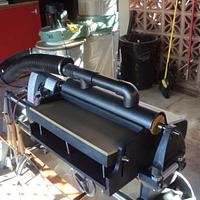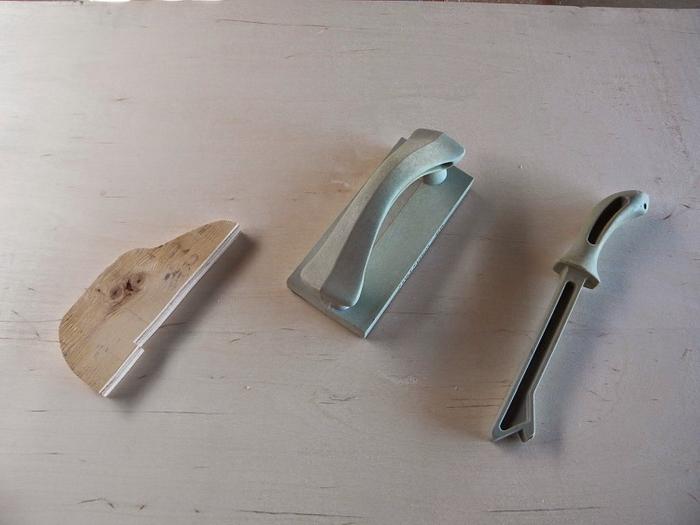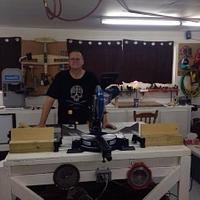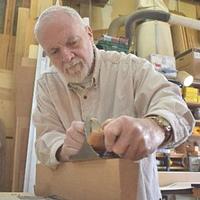
shipwright
in over 11 years
More from shipwright
Of Push Sticks and Thin Strips
For some time I have been watching the various postings of push sticks and push “shoes” with interest as well as the many elaborate thin strip jigs. I have debated with myself whether or not to give my input and even took a bunch of photos and a video one day to illustrate my points…….. but ……… safety in the shop is a very personal thing and everyone has different comfort levels so I have held off.
Today I finally decided to throw my shoe into the ring as it were and explain why it is right for me and perhaps shed some light on why I just don’t get the complex versions. I realize that my solution may not be for everyone but I present it as another point of view for your perusal and consideration.
My thumbnail photo shows two “factory” pushing devices and the simple plywood shoe that I use exclusively as a pusher for table saw, jointer, router table, and even occasionally band saw. The stick style I believe to be dangerous and the pad style almost as bad.
To me a good push tool must control the workpiece and protect my hands and should be able to cut strips as thin as you want against the fence. That let’s out about all manufactured pushing devices as they are not “consumable”.
As for the shop made “shoe” styles, I like most of them but they all seem to have a feature or two I don’t like. Most, for example, have handles that stick up well above the blade, ostensibly to keep the operator’s hands farther from the blade. Unfortunately that makes them less stable than a low profile model. Others I have no issues with except that they are more complex than necessary.
This is getting long but I want to explain. This is the way I learned to cut safely many years ago. Two or three fingers hooked over the fence and the best tool we have to control a workpiece with, a hand, doing the pushing. I am completely comfortable with this down to about a 1 1/2" rip.
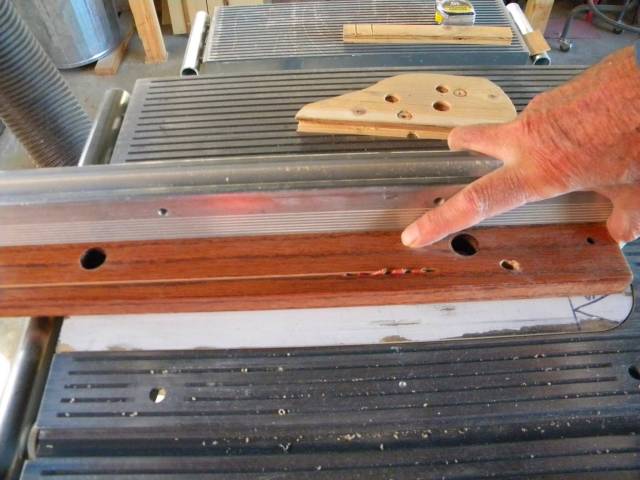
After that I use the shoe and keep the blade height just above the wood. My fingers can still hook over the fence to stabilize the shoe against tipping and I believe the closer to the action you are controlling the piece, the better the control.
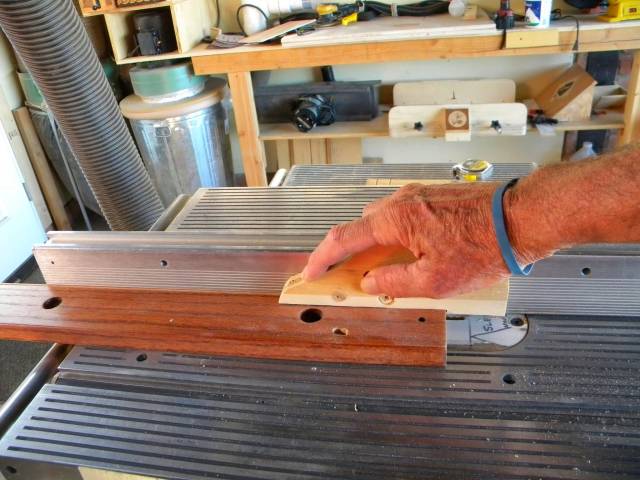
When you cut thin strips the saw is buried in the pusher. There is no safer place for it as there is no blade exposed. When the shoe gets used up it is discarded and replaced with a new one.
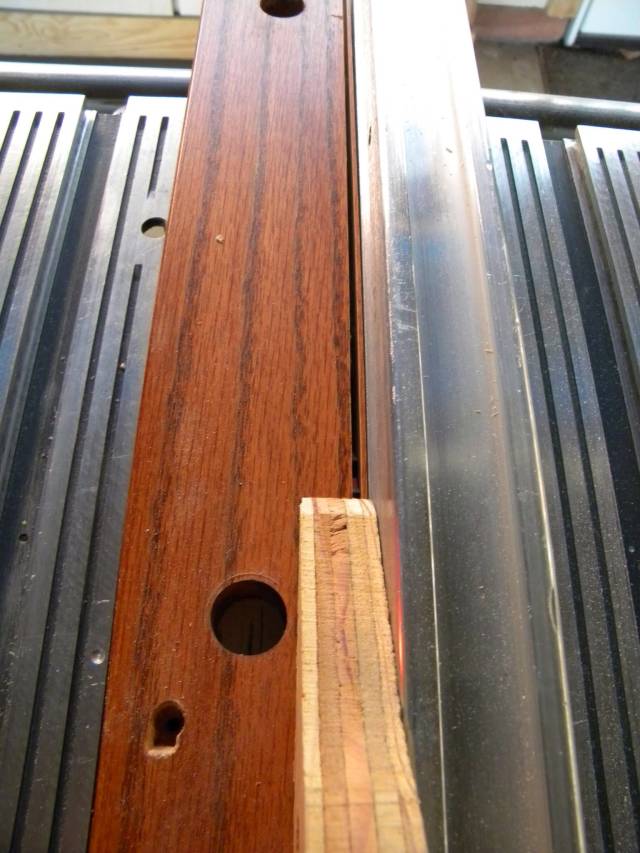
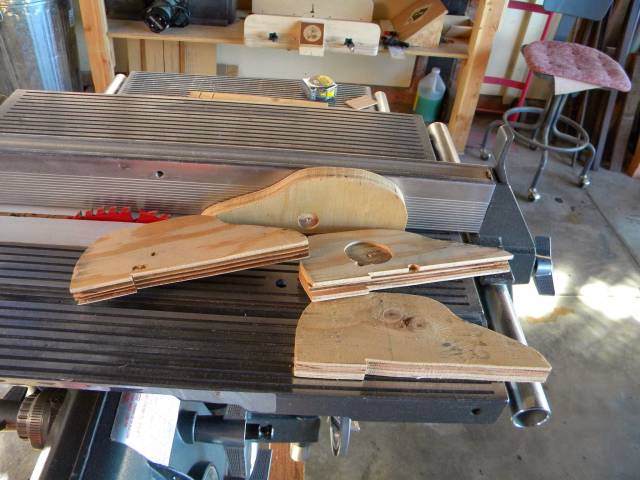
I didn’t invent this. I am sure there are lots of others using it. I present it here simply to add to the discussion and to illustrate why I think “simpler is better” this time.
In the video below I am cutting 1/16" strips against the fence. They could be thinner, you just need a good ZCI.
Thanks for listening to my rant. I’ll go away now.
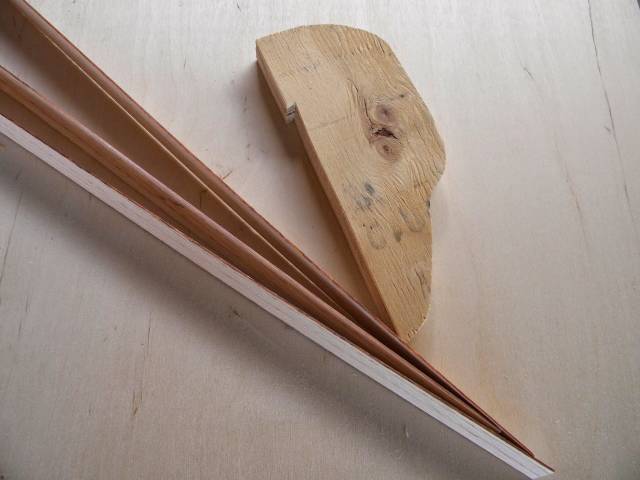
The early bird gets the worm but its the second mouse that gets the cheese.
7 Comments
Good post Paul.
I never fancied the large pushers like the griper.
When a pusher require setup to do anything with it it becomes a burden in my opinion.
I bought some plastic push stick from HF early I have not used them for years, since I started using the push shoe.
Abbas, Castro Valley, CA
Nice post. Thanks for the good info. It agrees with my impressions of the commercial push sticks.
Paul,
We tend to agree with you. I don’t use anything but my hand in much the same way as you do. For a long, narrow piece that I am ripping, I use a featherboard and hold the piece being cut with my right hand a few inches back from the blade and push with my left hand. When it gets toward the end, I use the push stick for the last few inches that pass the blade. I made a pusher that straddles the fence for narrow strips. I like how it works; it’s just three pieces of scrap glued together. I need to make a few shoes like yours.
L/W
“Those who would give up essential Liberty, to purchase a little temporary Safety, deserve neither Liberty nor Safety.” Benjamin Franklin
I’ve always wondered why anyone would pay a high price for one of those commercial type pushers when they are so easy and quick to make in the shop.
Mike, an American living in Norway
You and use a similar method, I always put my end 2 fingers over the fence and I never really use the push style. I even have the “Rigid” one that came with the saw in a drawer already. My shoe style stick is needing replacement soon, when my son gets home from Alberta I will get him to make another, sentimate really. Great article Paul.
CHRIS, Charlottetown PEI Canada. Anytime you can repurpose, reuse, or recycle, everyone wins!
I also use the “Fingers Over the Fence” method, most of the time. I have a push board similar to the one you made. Have made 100’s of them over the years. Never made a push stick. One come with my DeWalt table saw, but I usually only use it as a “Feather Board” while using my push board.
Looked at the “Gripper” online (I think that’s what it’s called) and was amazed at the complexity and cost. Guess enough people by them to keep them on the market. ???
No matter what one uses, it should keep one safe.
Keith "Shin" Schindler
Thanks Paul
woodworking classes, custom furniture maker









